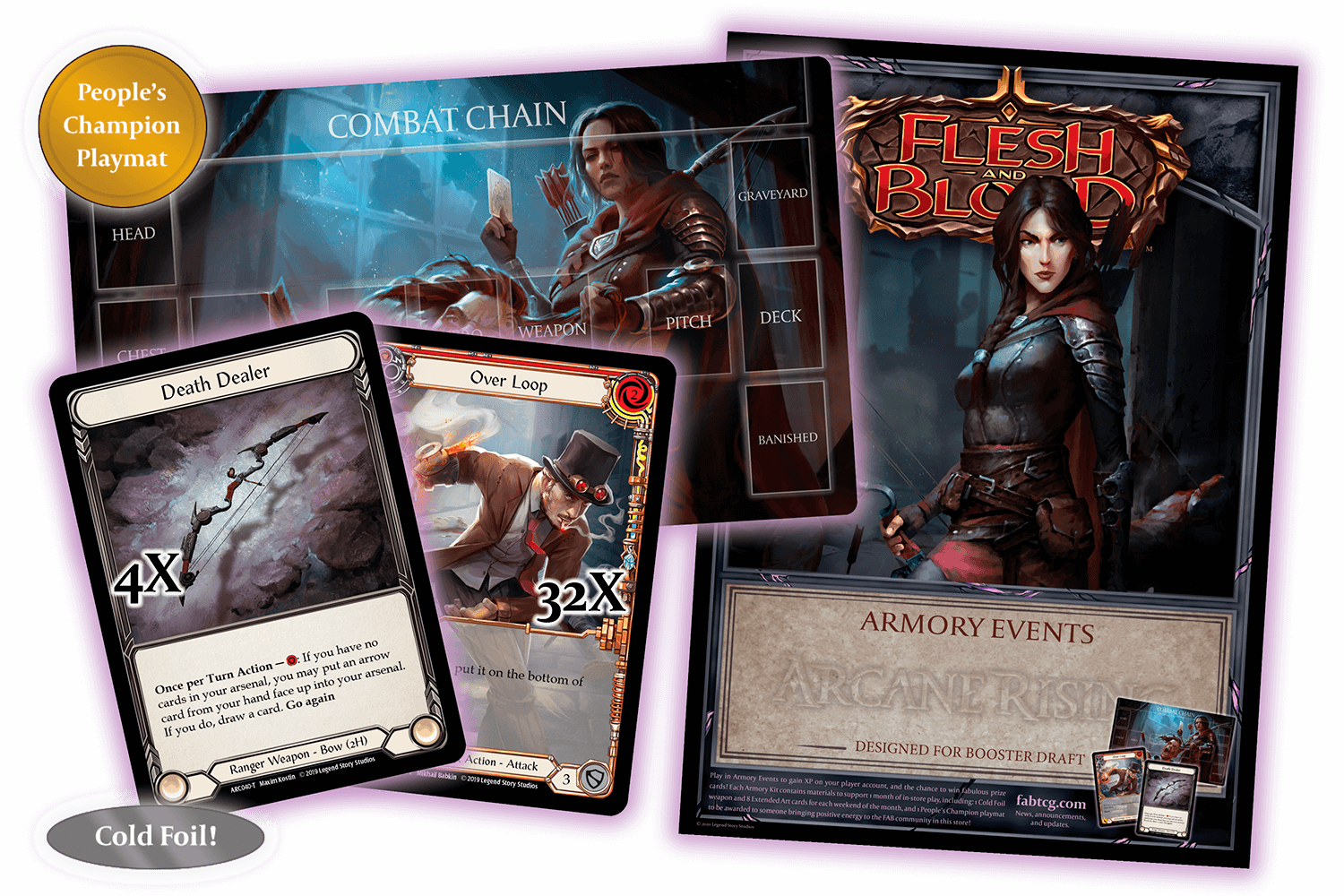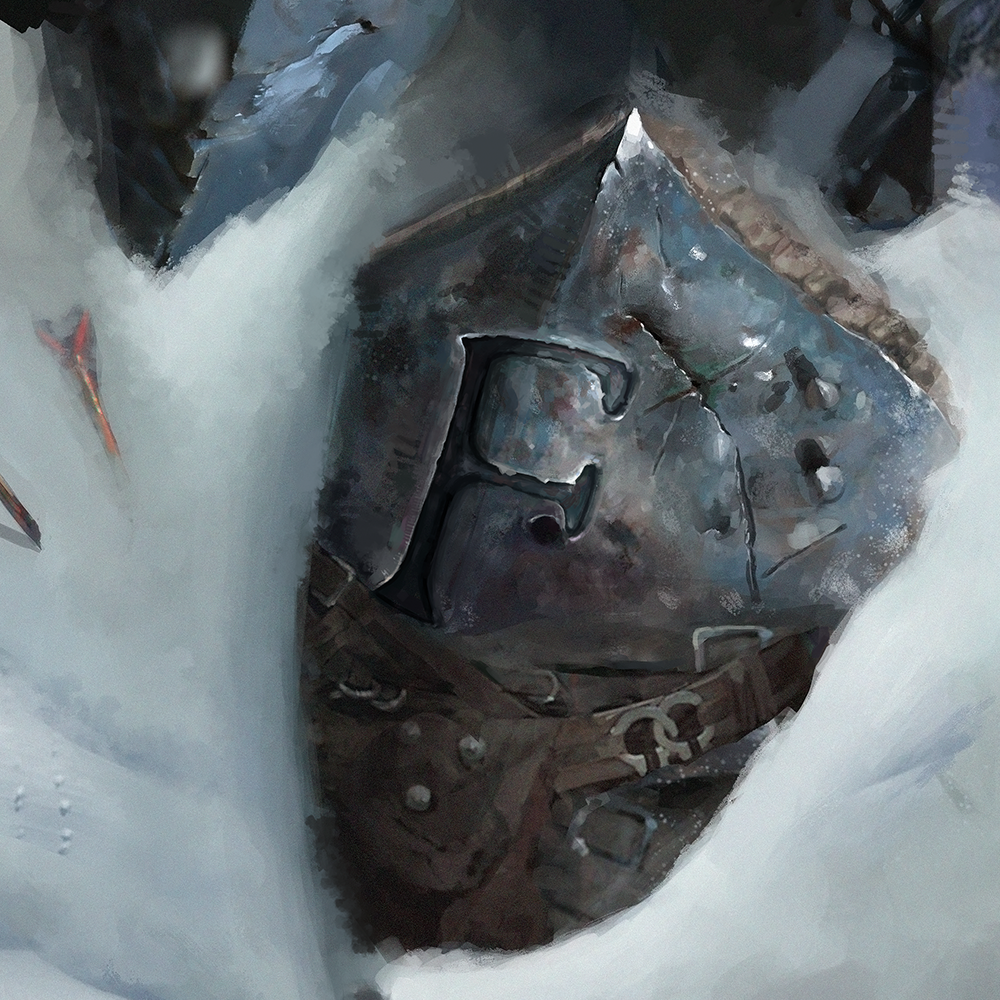This game of ours is played in a diverse handful of formats. Recently, Classic Constructed and Booster Draft have been held up as the premiere, skill-testing tiers of play, with Blitz, Sealed, and Ultimate Pit Fight waxing with variable heft in the casual portion of the spectrum. I find a lot of enjoyment in all of these formats, each filling a separate wedge of the Flesh and Blood pie:
- Blitz is just perfect for bringing players in to the game.
- Classic is so deep and thoughtful that it's a natural choice for competitive players.
- Sealed is a bit more of a relaxed, limited format that hearkens back to the very roots of TCG play.
- Draft is often the more serious and skill-testing limited offering.
- Ultimate Pit Fight can be some of the most, or least, serious games you'll ever have, with politics coursing through the heart of the game and bleeding deeply in to every play.
But this series sets its sights firmly on the Draft format in particular. How do you Draft, and why would you even want to? Why do I call it the “more serious and skill-testing limited offering?”
Well... welcome to Part One.
Why Draft?
Because Draft is excellent! It's fun and exciting! In Draft, you can crack packs open with friends and strangers, then test your improvisational mettle. If you're going to be opening packs anyhow, you might as well make a game of it!
In fact, Flesh and Blood is often touted as being designed for draft! Each box of 24 packs perfectly accommodates a full draft of eight players, and the Armory posters that one might see hanging at the FLGS all propose that the game events are “Designed for Booster Draft.”

If you haven't tried it before, the format works like this:
Booster Draft is a format in which a group of players get together with unopened booster packs to play with fate, instinct, and wit.
Each player will start with three unopened packs of the same set of cards, and simultaneously open one of those packs each.
Then everyone will privately select one card from their opened pack, and pass the remainder of the pack to the player on their left. This process continues until the first packs are exhausted, and everyone has 15 hand-selected cards.
Everyone then opens their second pack in the same way, this time passing cards to the right, selecting another 15 cards. When the second packs are all picked, close out the draft by opening the third and final packs and passing them to the left again.
At the end of this process, each drafter should have seen and picked from every pack brought to the table two or three times, and hand-selected 45 cards to play with.
Everyone is given 30 or so minutes to figure out which Young Hero they are going to play, gather up their token weaponry and such, and construct their 30-card-minimum deck.
The Social Contract
Draft can be a really enjoyable social experience. There is a strong community aspect that rises up as you pass packs back and forth. Inside jokes are born in these moments, producing laughs for years to come.
Drafting can also be a fine way to boost your collection. Many stores, like ours here in Colorado Springs, offer discounts on draft nights. Not only can this potentially help you find cards you might be looking for, it also helps stores move product and stay open- a real win-win!
The Art of the Draft
Draft tests not only one's ability to play tightly and effectively, but it also tests your ability to evaluate cards and even evaluate metagames. This is one of the formats where deck stacking/ pitch cycling is very relevant, and will likely come up in your games. I don't know if I would argue that Draft is the ultimate format, as I think that every format has its' own sacred space within the game, but I will say that Draft will test practically every skill you have as a Flesh and Blood player.
Draft will test practically every skill you have as a Flesh and Blood player.
In order to consistently win drafts, you'll need to attack and block properly, only taking damage when necessary and trying to deal damage when you can. Attacking at good break-point numbers, like 4 and 7, can only happen if you drafted the right cards from the 360 that went around the table.
Blocking those same numbers is only efficient if you selected the right cards in the draft itself. If you end up picking a lot of cards that block for 2, you might just be forced in to situations where you have to block with every card in your hand, and that is rarely a good position to be in. Your capacity for playing tightly and effectively is very dependent upon what cards you drafted.
Pitch stacking is in my opinion one of the most interesting facets of Flesh and Blood.. As a Guardian player, this is something that I am familiar with, and something that not all of my Blitz opponents necessarily pay much attention to. 'Pitch stacking' is where you purposefully pitch certain cards to pay for others, and do so in such a way that they form a nice stack on the bottom of your deck.
One of the things we do as Bravo players, for example, is try to get the 'bottom' of the deck to go something like "3 blue cards, 1 red threat; 3 blue cards, 1 red threat..." Then, when we draw in to the bottom of the deck, we know that what we are getting is very powerful. In draft, your decks are so small that you will very likely be seeing the bottom of your deck, and therefore the pitch stack, pretty regularly.
Metagame evaluation is a huge part of drafting, and the term itself may well be an oversimplification. This encompasses a bunch of skills, like making and reading signals, card knowledge, deck knowledge, finding your lane, and pivoting.
The most basic of these is card knowledge. Know the cards in the format! You don't have to memorize every card, but it would be good to be familiar with the commons. Luckily, in FaB, commons pretty much all come in three colors, so learning one is a lot like learning three- which makes learning 132 commons a lot more like learning 44- which to me is a lot more manageable. Plus the more you play, the better you will learn the cards.
You certainly don't have to memorize all the cards in a format to do well in it- and definitely not before you even crack a single pack- but you would do well to peruse the card galleries, or use FABDB, to sift through the commons once or twice.
Deck knowledge is heavily linked to card knowledge, but the are not one and the same. Deck knowledge pertains to knowing what decks are plausible in the format. For Welcome to Rathe, this was pretty easy: there are basically four deck archetypes, and they are the four heroes. In Tales of Aria, however, you start to see much greater diversity. Oldhim can be ice focused, earth focused, or a hybrid; he can be play aggressive, setup, or control. The two heroines can claim the same diversity.
Both of these skills feed in to signaling, which is the term used to talk about the “read” of the draft. Each player in a draft will be receiving packs from their neighbors that have been picked through already. While you are looking at the packs as they come to you, if you notice that you just never see any good Warrior cards coming in from the right, then you can reasonably assume someone is drafting Warrior. In the same way, if you are taking all of the good Guardian cards, they will perhaps read the signals you're passing: you're on Guardian.
In the course of all of this card-choosing, you will be laying down and receiving signals as the packs flow around the table. If you start to take powerful cards that happen to be Runeblade, the people on your left will likely notice that. If you begin to notice in your signal-reading that, gosh, a whole lot of good Ninja cards are coming your way while simultaneously very few good Warrior/Guardian/Brute cards make it to you, it may be good to begin taking those powerful Ninja cards. This is called finding your lane, and it is a rather valuable skill to learn, because if you are 'in your lane' then you will probably draft a good deck.
On top of that, it is good to take powerful class cards, even if you're not intending to use them. You do want to build a deck that wins, after all- and after that, preventing your opponent from building a winning deck is a valid strategy too!
Crafting a Draft: The Cube
Cube Draft is a format borne from the TCG players of old, who sought to craft their own drafts formats. "Draft can be so fun," thought they, "that we should make our own!" They found that a few key ingredients make for a good cube, and many fine recipes have been wrought from the cardboard ingredients that they had to work with.
In my not-so-humble opinion, Cube is the pinnacle of draft- and I'd go so far as to say it is the untapped pinnacle Flesh and Blood as well.
In order to Draft Cube, one must first Design Cube. As there is not yet a product in Flesh and Blood called Cube Draft, these must be homemade. The principles are these: in an 8-person draft pod, 24 packs are opened and 360 cards are drafted through. In those 360 cards, there are decks for each player- decks that can be forced, lanes that can be found or disrupted, et cetera. In those 360 cards, a draft can be found!
There are many structures you can use when designing a Cube. One of my favorite cubes is the Set Replica Cube. I always make one of these whenever I open a lot of cardboard for a game, as the formula is simple: 6 of every common, 3 of every rare, 2 of every super, and 1 of every majestic. With these cards, one can carefully recreate randomized packs so that they don't have to keep buying sealed product whenever they want to draft- plus you can draft out-of-print sets, where sealed product isn't even available anymore!
The natural progression from the Set Replica is the Refined Set Cube. A Set Replica Cube can get very close to replicating real packs- but the card pool is absolutely massive, sometimes over 900 cards! A Refined Set Cube seeks to slim the prospect down to a smooth 360 cards: exactly enough to draft with.
So, what if we took those 360 cards, and tweaked them? Wouldn't it be better, more interesting perhaps, if the draft always had 2 Mugenshi: Release to go with its 1 Lord of Wind? 3 Glint the Quicksilver, just to give Dorinthea a better chance? From these principles, we have Cube Draft.
Let's talk about that number 360.
In cube draft, size does matter. A 360 cube is exactly large enough that 8 players will always draft every single card: every card will pass through player's hands, every deck will rear its head in some fashion.
The next size up, a 540 cube, leans a little bit more into variance; there are 180 cards, the equivalent of twelve packs, that simply won't be drafted. What this means is that, to use an earlier example, there might be a Lord of Wind without any Mugenshi: Release. Or maybe Sink Below is completely absent from the draft, even though you included 8 in the cube.
Still, not all cubes are made with equal power. My Refined Set Cube might lean a little more into Hammer Bravo and yours might go harder in to Red Liner- it's your choice, after all.
The final cube type I want to bring up, is the Power Cube. A Power Cube is one that seeks to amplify the most powerful aspects of the game, perhaps by including several Legendaries in-and-amongst the common equipments, or by including multiple copies of relevant and game-changing majestics.
Going forward with this series, I will be focusing on bringing the Refined Set Cube to Flesh and Blood. In the next article I will provide lists, guides, and insights in to the Refined Set Cube building process, as well as one of the first Cube Draft Lists for Flesh and Blood. With our next release still a few months away, it's an excellent time to add a casual format to your repetoire!





